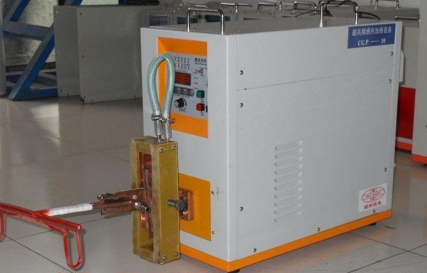- 11
- Oct
Prečo súprava vysokofrekvenčného kaliaceho zariadenia nemôže spĺňať požiadavky niekoľkých druhov obrobkov?
Prečo nemôže súbor vysokofrekvenčné kaliace zariadenie spĺňajú požiadavky niekoľkých druhov obrobkov?
Napríklad také požiadavky na kalenie:
1. Kategória čapu nápravy:
1. Obrobok po ochladení nepraská
2. Deformácia nemôže byť väčšia ako 0.2 mm
3. Efektívna hĺbka kalenia povrchu: 1-5 mm
4. Tvrdosť po úprave je približne: 45-50 mm
5. Hlavným materiálom je rúrková oceľ zo stredne uhlíkovej zliatiny, hlavný materiál je 40Cr, 42CrMo, tvrdosť obrobku po úprave je asi HRC: 45-5
6. Workpiece size: length 620-1476mm diameter: φ44-φ103mm
2. Ozubené kolesá
1. Hĺbka povrchového kalenia: 0.8-0.9 mm
2. Hlavný materiál: 45#, 40Cr, 40CrNi atď.
3. Surface hardness HRC after treatment: 48-53
4. Počet zubov: 26, 33, 55, 60 Priemer indexovej kružnice: φ52, φ66, φ110, φ120 Modul: 2
3. Ložiská
1. Hĺbka povrchového kalenia: 0.5-1 mm
2. Hlavný materiál: Cr14Mo4V, G20Cr2Ni4A atď.
3. Surface hardness HRC after treatment: 61-63
4. Vonkajší priemer: φ50-φ120
The customer requires a set of high-frequency quenching equipment to meet the quenching requirements of the above three types of workpieces at the same time. This cannot be achieved, mainly because of the selection of the high-frequency induction heating power supply. Because: the surface hardening depth is 1-5mm, we will recommend to choose the super audio frequency induction heating power supply with a frequency of about 30KHZ, and the surface hardening depth 0.8-0.9mm should choose the 250KHZ high-frequency induction heating power supply, a high-frequency induction heating power supply cannot To achieve two frequencies, so it can not meet all the quenching requirements, two high-frequency quenching equipment is needed to solve such quenching process requirements, which exceeds the customer’s original budget, so this is also the limitation of high-frequency induction hardening. In addition, high-frequency induction hardening is not suitable for workpieces with complex shapes, such as certain transmission gears. It requires extremely high wear resistance and tough cores. At present, nitriding technology is still used. Therefore, high-frequency induction hardening is only suitable for mass production of one or one family of workpieces.

